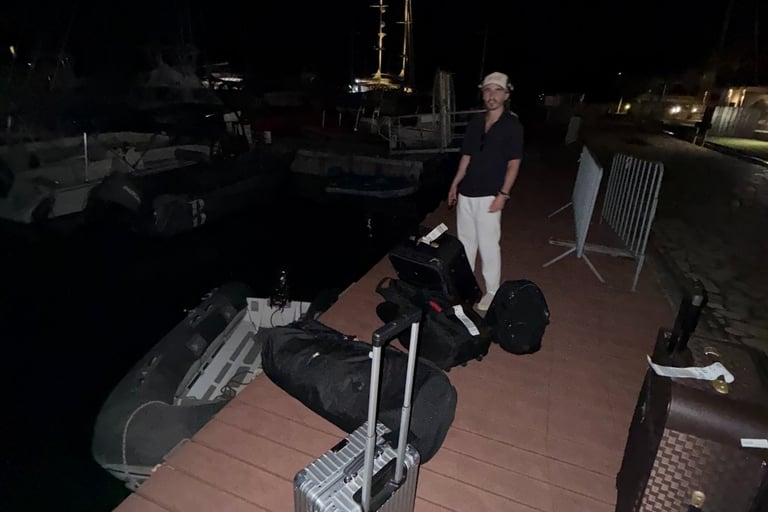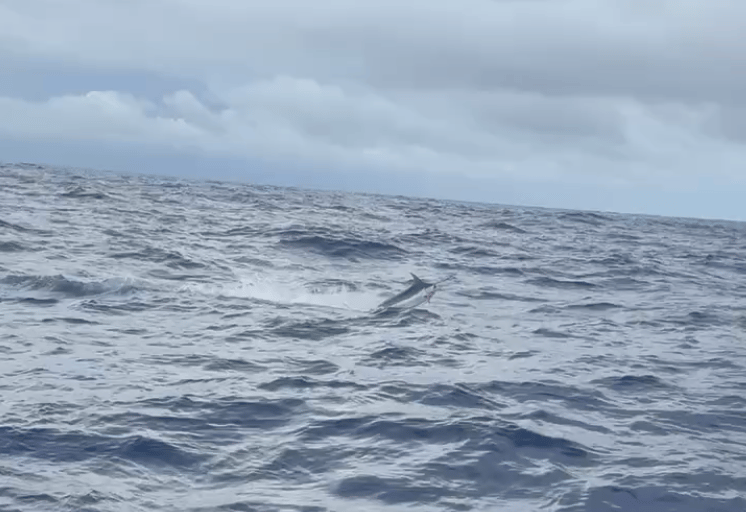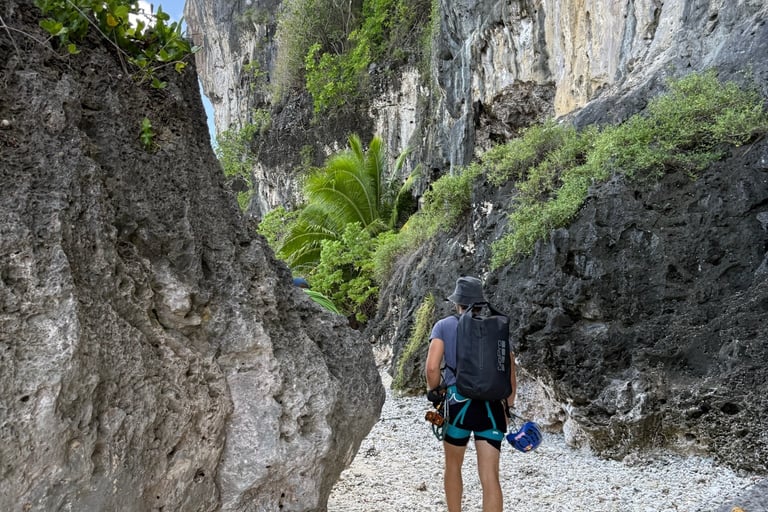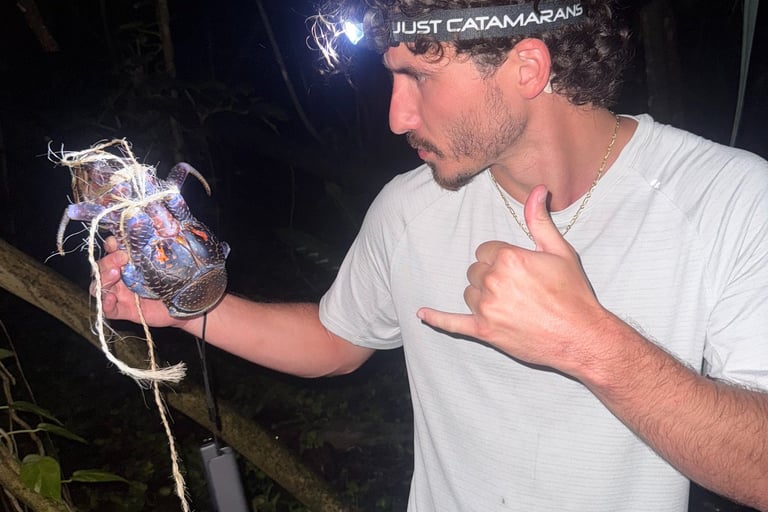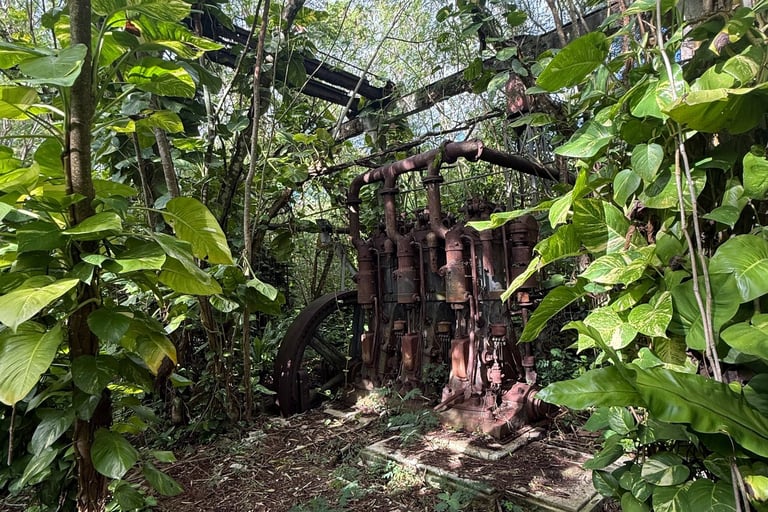Set Sails, Makatea Ahead!
We set sails and move on from Tahiti on our way to the Tuamotos, this time exploring Makatea a small but truly magnificent island.
3/30/20255 min read
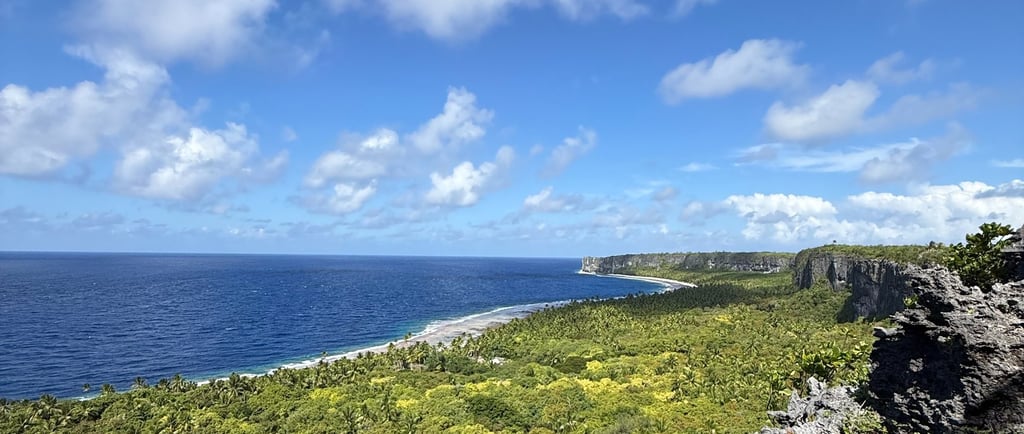

Bernie arrived and what a breath of fresh air it has been to have a friend to do this with. While I originally wanted to do this trip solo, there really was not a big reason for it. A lot of people solo travel to find themselves, but that was never really my goal. I just wanted to celebrate life and I knew I could not rely on anyone else to make the trip happen.
I picked Bernie up around 11pm, way past my new bedtime. Ever since I have been on the boat, I fall asleep so much earlier, it is definitely island time now. From the moment Bernie landed, it felt like a new chapter. The next five days were a total blur. We ran around Tahiti like hamsters on a spinning wheel, constantly bouncing from marine store to Carrefour to another marine store to an electronics store and so on. By the end of those five days, Bernie was just as tired of all the prep as I was. It felt like all we ever did was chase the next task on the list.
With a tired but excited energy, we lifted anchor and finally took our first real sail towards the Tuamotus. The first island on our list was Makatea, about an 18 hour sail away, and unbeknownst to us, it was going to be a rough one.
We knew we would have to sail against the trade winds and into the waves, but not even two hours in, we were hit by squalls and rain. Since it is the tail end of rainy season, the weather here can be incredibly unpredictable, and this was a great reminder that while we can plan crossings as much as we want, out here we are always under the whims of the earth. The real key is being comfortable managing the boat in higher winds and practicing safety procedures often.
It was a tough 18 hours. Bernie and I shared the night shifts, but to be honest, neither of us really slept. The bow kept slamming into the waves and the wind would howl as gusts came in strong and sudden. One silver lining was getting to hear one of my favorite sounds in the world, the fishing reel screaming as line tore out.
The first fish we hooked was the biggest albacore tuna I had ever seen, but I had my sights set on something I could sashimi, maybe a yellowfin. Not long after, the reel exploded again, this time even stronger. We fought the fish for over an hour, and as it got close to the boat, we finally caught a glimpse of color. Then it launched out of the water. Marlin.
We fought and fought, and every time we got it close to the boat it would rip line back out. Eventually, we had it within gaffing distance, but at the last second it shot under the boat and snapped the line. After that, it was a pretty quiet sail to Makatea, but even though we lost that one, I have a feeling there are going to be plenty more chances ahead, some wins and plenty of stories either way.
As we approached Makatea, the towering atoll rose 78 meters out of the water like a jagged fortress. It had this almost eerie, imposing look to it. Makatea was once the most advanced island in all of French Polynesia, with thousands of people living there and one of the most prestigious phosphate mines in the world. After the mines closed, the island was left almost abandoned, a hollowed out reminder of what once was, with millions of holes scattered across the land.
Luckily, not everyone left. Some families stayed behind and have been working hard to rebuild and rebrand Makatea. One of them is Tapu, the mayor’s son, who has put in a ton of effort showcasing the island’s beauty. He has bolted climbing routes all over the cliff faces and guides visitors through freshwater caves and across the rugged terrain.
Bernie and I decided to try the climbing, and at first we thought it would be pretty chill. Tapu quickly made it clear that he was going to push us a little harder. The climbing was no joke. The rock was razor sharp, and while Tapu moved confidently, I could not help but imagine what would happen if a rope rubbed too much against the jagged edges. One slip and you would definitely be needing stitches, maybe worse. Maybe I am exaggerating a little, but seeing the ropes dragging across the razor sharp rocks definitely sent shivers down my spine.
After a day of climbing and some freshwater cave diving, Bernie and I heard rumors that you could catch coconut crabs on the island. At night, we headed toward the small town with a flashlight and some wishful thinking. Sure enough, a man with two dogs approached us and asked what we were doing. Turns out, he was a commercial coconut crab hunter, and he offered to show us how it is done.
He barely spoke, but we followed him deep into the jungle, walking across the island's natural coral walls under the stars. It honestly felt like another planet. The crabs themselves were not hard to catch, they get stuck in the coconut husks at night, and before we knew it we had a solid haul. After thanking our new friend, we made our way back to the boat with enough crab for a proper feast.
The next day, we did a bit of diving along the reef. It was there that I saw the fish I have been dreaming about since I started planning this trip, a huge dogtooth tuna sitting just on the drop-off. While every part of me wanted to load the speargun and take the shot, I made myself hold back. I promised I would not spear anything that deep without a dive buddy watching my back, and I intend to stick to that. There are too many stories of things going wrong when people rush. The fish will still be there when I am ready.
That afternoon we cooked up the bonito we had caught, marinating it in soy and teriyaki sauce, and boiled the coconut crabs in butter. It was simple and so good, and definitely made the jungle trek worth it.
After three days on Makatea, it was time to move on. We lifted anchor again, feeling a little beat up but excited for what was next. The destination this time was Rangiroa, about a twelve hour sail away. Another island, another adventure waiting.
